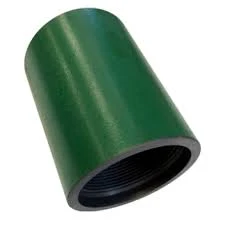- Afrikaans
- Albanian
- Amharic
- Arabic
- Armenian
- Azerbaijani
- Basque
- Belarusian
- Bengali
- Bosnian
- Bulgarian
- Catalan
- Cebuano
- Corsican
- Croatian
- Czech
- Danish
- Dutch
- English
- Esperanto
- Estonian
- Finnish
- French
- Frisian
- Galician
- Georgian
- German
- Greek
- Gujarati
- Haitian Creole
- hausa
- hawaiian
- Hebrew
- Hindi
- Miao
- Hungarian
- Icelandic
- igbo
- Indonesian
- irish
- Italian
- Japanese
- Javanese
- Kannada
- kazakh
- Khmer
- Rwandese
- Korean
- Kurdish
- Kyrgyz
- Lao
- Latin
- Latvian
- Lithuanian
- Luxembourgish
- Macedonian
- Malgashi
- Malay
- Malayalam
- Maltese
- Maori
- Marathi
- Mongolian
- Myanmar
- Nepali
- Norwegian
- Norwegian
- Occitan
- Pashto
- Persian
- Polish
- Portuguese
- Punjabi
- Romanian
- Russian
- Samoan
- Scottish Gaelic
- Serbian
- Sesotho
- Shona
- Sindhi
- Sinhala
- Slovak
- Slovenian
- Somali
- Spanish
- Sundanese
- Swahili
- Swedish
- Tagalog
- Tajik
- Tamil
- Tatar
- Telugu
- Thai
- Turkish
- Turkmen
- Ukrainian
- Urdu
- Uighur
- Uzbek
- Vietnamese
- Welsh
- Bantu
- Yiddish
- Yoruba
- Zulu
Casing Coupling Specifications and Size Measurements for Oil and Gas Industry Applications
Understanding Casing Coupling Dimensions in Oil and Gas Industry
The oil and gas industry heavily relies on specific components that ensure the efficiency, safety, and efficacy of drilling operations. Among these components, casing and coupling play vital roles, serving as the backbone for well integrity and productivity. Understanding casing coupling dimensions is essential for professionals in the industry, as it directly affects both operational efficiency and overall safety.
Casing An Overview
Casing is a series of steel pipes installed in the wellbore to provide structural integrity, prevent the collapse of the well, and isolate the various geological formations. Typically, casing comes in different sizes and weights, which are measured in terms of their outer diameter (OD), wall thickness, and the material specifications. Depending on the project's requirements, the casing type will vary; commonly used types include surface casing, intermediate casing, and production casing.
Couplings The Connection Between Casing Sections
Couplings are critical components used to connect sections of casing. Given that the drilling process often requires multiple casing strings to be connected together, the dimensions and quality of these couplings have a direct impact on the overall structural performance. Couplings are designed to withstand significant loads and pressures, ensuring that the casing strings are securely joined to create a unified and safe wellbore.
Importance of Casing Coupling Dimensions
Casing coupling dimensions refer to the specific measurements that define the size and fit of the coupling relative to the casing it connects. These dimensions are crucial for several reasons
1. Pressure Resistance Properly sized couplings must be able to withstand the pressures encountered throughout the drilling and production phases. Inadequate dimensions can lead to failures, resulting in serious safety hazards and costly downtime.
casing coupling dimensions

2. Material Compatibility The dimensions of the coupling must match those of the casing it connects to ensure compatibility. This compatibility is paramount for maintaining the integrity of the wellbore and preventing leaks or rupture.
3. Weight Distribution Due to the heavy loads imposed during drilling and production, accurate coupling dimensions help to distribute weight evenly across the casing string. This minimizes the risk of structural failure that can occur from uneven load application.
4. Ease of Installation Standardized dimensions facilitate easier installation and handling of casing and couplings. Mismatched dimensions can lead to complications during assembly, requiring additional time and resources, and potentially introducing risks.
Industry Standards and Specifications
With the critical importance of casing coupling dimensions, industry standards have been established to guide manufacturers and operators. Organizations like the American Petroleum Institute (API) provide specifications for casing and coupling dimensions, ensuring they meet the required load-bearing and operational criteria.
Conclusion The Future of Casing Coupling Dimensions
As the oil and gas industry continues to grow and evolve, the technology surrounding casing and coupling dimensions is also advancing. The integration of new materials, enhanced manufacturing techniques, and advanced computational modeling are paving the way for more efficient and reliable casing systems. As operators seek to optimize drilling processes, understanding the nuances of casing coupling dimensions will remain an essential skill for professionals in the field.
In the context of increasing global demand for energy, ensuring the safety and reliability of drilling operations is paramount. By focusing on the accuracy and standards of casing coupling dimensions, the industry can better mitigate risks, enhance production efficiency, and maintain the highest level of safety in oil and gas operations. The importance of precise dimensions in casing couplings cannot be overstated, as they are key contributors to the overall success and longevity of drilling projects.
-
Tubing Pup Joints: Essential Components for Oil and Gas OperationsNewsJul.10,2025
-
Pup Joints: Essential Components for Reliable Drilling OperationsNewsJul.10,2025
-
Pipe Couplings: Connecting Your World EfficientlyNewsJul.10,2025
-
Mastering Oilfield Operations with Quality Tubing and CasingNewsJul.10,2025
-
High-Quality Casing Couplings for Every NeedNewsJul.10,2025
-
Boost Your Drilling Efficiency with Premium Crossover Tools & Seating NipplesNewsJul.10,2025







